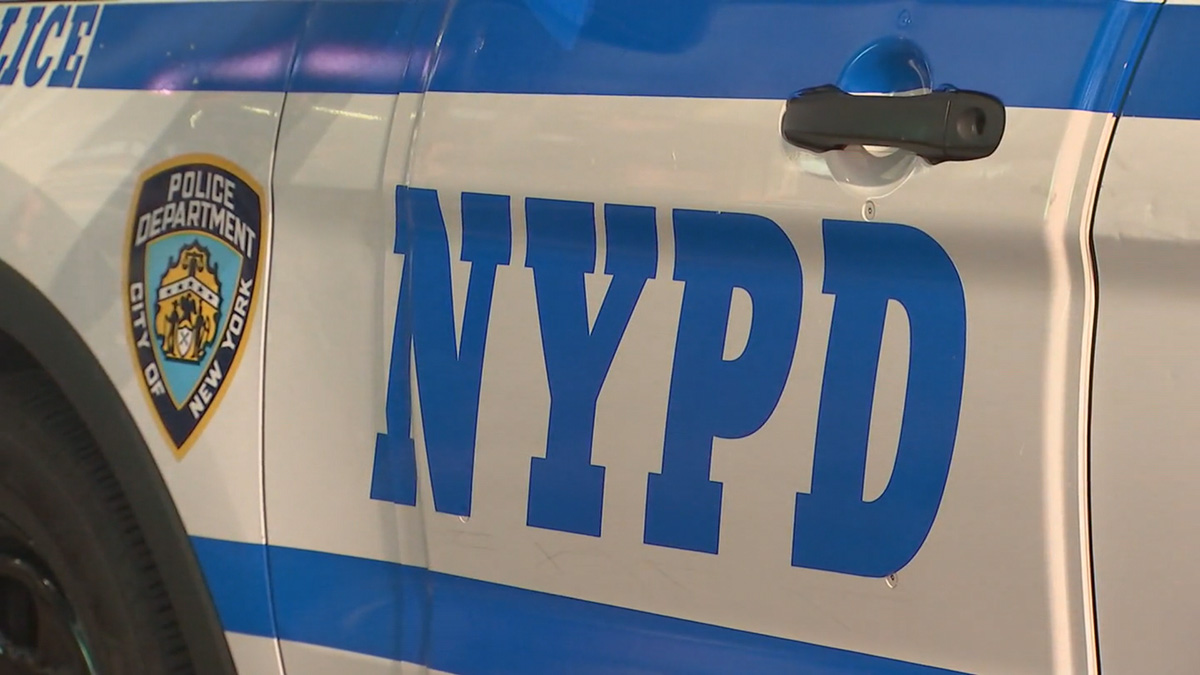Bodega Panic Buttons: NYC Safety Crisis Demands Action!
Bodega Panic Buttons: NYC Stores Demand Enhanced Safety
Introduction: A Cry for Help from NYC's Bodegas
Imagine walking into your local bodega, grabbing a quick snack, and feeling safe. That's the ideal, right? But lately, a wave of violence has swept across New York City's beloved bodegas, leaving workers and communities shaken. Two tragic incidents in the Bronx and Manhattan, where young men lost their lives, have sparked a fierce debate: what can be done to protect these essential cornerstones of our neighborhoods?
The United Bodegas of America (UBA) is leading the charge, demanding immediate action. Their primary focus? Installing panic buttons with real-time NYPD monitoring in every bodega. But is this the silver bullet we've been searching for? Let's delve into the details and explore the potential solutions to this urgent problem.
The Tragic Reality: Violence in Our Local Stores
“You have two young men that died in the past 48 hours inside two bodegas,” Fernando Mateo, spokesperson for the UBA, lamented. “That’s unacceptable.” These aren't just statistics; they're lives cut short, families devastated, and a community traumatized. The recent surveillance video from an Inwood bodega, showcasing a violent brawl that ended in a fatal stabbing, is a stark reminder of the dangers bodega workers face every day.
And the very next morning, another violent act occurred at a bodega in Williamsbridge. The details are still emerging, but the pattern is chilling. It's clear: something needs to change, and it needs to change now.
The Panic Button Proposal: A Lifeline or a Band-Aid?
What Exactly is Being Proposed?
The UBA is advocating for the installation of panic buttons in every bodega, connected directly to the NYPD. The idea is simple: when a worker feels threatened, they press the button, and law enforcement is immediately dispatched to the scene. Think of it as a modern-day Bat-Signal for bodega workers.
Why Panic Buttons? The Rationale Behind the Demand
“This isn’t a luxury this is a life-saving tool,” Mateo passionately argued. The UBA believes panic buttons can provide a crucial lifeline in moments of crisis, giving workers a direct line to help when they need it most. It's about creating a safer environment where workers can feel secure and focus on serving their communities.
Beyond Panic Buttons: Exploring Comprehensive Security Measures
Surveillance Systems: More Than Just Recording
While panic buttons are a key component, a multi-layered approach is essential. Enhanced surveillance systems, including high-definition cameras with wider angles and better night vision, can act as a deterrent and provide valuable evidence in the event of a crime. Imagine if those Inwood and Williamsbridge incidents had clearer, more comprehensive footage.
Improved Lighting: Shining a Light on Safety
Poor lighting can create an environment of fear and vulnerability. Investing in brighter, more energy-efficient lighting, both inside and outside the bodega, can significantly reduce the risk of crime. Think of it as removing the shadows where danger can lurk.
Protective Barriers: A Physical Shield Against Violence
While not ideal for customer interaction, bulletproof glass or other protective barriers can provide a physical shield for workers, especially during late-night hours. This might be a more suitable option for bodegas located in high-crime areas.
Community Involvement: A Collaborative Approach to Safety
Neighborhood Watch Programs: Eyes and Ears on the Street
Reviving and strengthening neighborhood watch programs can create a sense of community ownership and deter potential criminals. When residents are actively involved in keeping their neighborhoods safe, it sends a clear message that crime will not be tolerated.
Building Bridges with Law Enforcement: Fostering Trust and Communication
Open communication and collaboration between bodega owners, workers, and local law enforcement are crucial. Regular meetings, community policing initiatives, and clear reporting mechanisms can help build trust and ensure that concerns are addressed promptly. It’s about creating a partnership, not an adversarial relationship.
Addressing the Root Causes: Poverty, Inequality, and Desperation
Economic Opportunities: Breaking the Cycle of Crime
While security measures are important, addressing the underlying social and economic issues that contribute to crime is equally vital. Investing in job training programs, affordable housing, and access to education can help break the cycle of poverty and desperation that often fuels criminal activity.
Mental Health Services: Addressing Underlying Issues
Many acts of violence are rooted in mental health issues. Expanding access to affordable mental health services and addressing the stigma associated with seeking help can prevent potential tragedies. Think of it as treating the illness before it manifests as violence.
The Cost of Safety: Who Pays the Price?
Funding Challenges: Balancing Security and Affordability
Implementing these security measures comes at a cost. Who will foot the bill? Will it be the bodega owners, the city government, or a combination of both? Finding a sustainable funding model that balances security with affordability is a significant challenge. Grant programs and tax incentives could provide much-needed assistance to struggling bodega owners.
The Impact on Bodega Owners: A Burden or a Benefit?
For many bodega owners, especially those operating on tight margins, the cost of these security upgrades could be a significant burden. However, a safer environment could also attract more customers and improve employee morale, ultimately benefiting the business in the long run. Is it an investment in security or an investment in the future?
The Technology Factor: Ensuring Reliability and Effectiveness
Reliable Technology: Avoiding False Alarms and Malfunctions
The effectiveness of panic buttons and other security technologies hinges on their reliability. False alarms and malfunctions can erode trust and overburden law enforcement resources. Regular maintenance, testing, and upgrades are essential to ensure that these systems function properly when they're needed most.
Data Privacy: Protecting Personal Information
As security systems become more sophisticated, concerns about data privacy arise. It's crucial to ensure that surveillance footage and other sensitive information are protected from unauthorized access and misuse. Clear policies and regulations are needed to safeguard personal data while maintaining security.
The Human Element: Training and Empowerment
Employee Training: Responding Effectively in Crisis
Panic buttons are only effective if employees know how and when to use them. Comprehensive training programs are essential to teach workers how to assess threats, respond calmly in crisis situations, and provide accurate information to law enforcement. Think of it as equipping them with the tools they need to protect themselves and others.
Empowering Employees: Giving Them a Voice in Safety
Bodega workers are on the front lines and often have valuable insights into potential security risks. Creating a culture where employees feel empowered to voice their concerns and suggest improvements can significantly enhance safety. Their input is invaluable and should be actively sought.
Legal Considerations: Navigating the Complexities
Liability Issues: Protecting Bodega Owners and Workers
Implementing security measures raises complex legal questions regarding liability. Who is responsible if a panic button malfunctions or if a security guard fails to prevent a crime? Clear legal guidelines are needed to protect both bodega owners and workers from potential lawsuits.
Compliance with Regulations: Ensuring Adherence to the Law
Any security measures implemented must comply with all applicable laws and regulations, including those related to surveillance, data privacy, and employee rights. Staying informed about the latest legal developments and seeking legal counsel is essential to avoid potential violations.
The Future of Bodega Safety: A Call to Action
Long-Term Solutions: Building a Safer and More Equitable City
Ultimately, creating a truly safe environment for bodega workers requires a long-term commitment to addressing the root causes of crime and inequality. Investing in education, job training, and mental health services is essential to build a more equitable and just city where everyone has the opportunity to thrive.
The Importance of Advocacy: Keeping the Pressure On
The UBA and other advocacy groups play a crucial role in keeping the pressure on lawmakers and city officials to address the issue of bodega safety. Their voices must be heard, and their concerns must be taken seriously. It's about demanding action and holding those in power accountable.
Conclusion: Prioritizing Safety for NYC's Bodegas
The call for bodega panic buttons is more than just a demand for a quick fix; it's a plea for safety and a recognition of the vital role bodegas play in our communities. While panic buttons are a valuable tool, a comprehensive approach that includes enhanced security measures, community involvement, and addressing the root causes of crime is essential. The safety of bodega workers is not just a business issue; it's a human issue that demands our immediate attention and action.
Frequently Asked Questions (FAQs)
Q1: Why are panic buttons being proposed for NYC bodegas?
A1: Panic buttons are being proposed due to a recent surge in violence at bodegas, resulting in tragic deaths. They're intended to provide workers with a direct and immediate way to alert law enforcement in emergency situations.
Q2: How would the panic buttons connect to the NYPD?
A2: The proposed system would connect the panic buttons directly to the NYPD's dispatch system, allowing for real-time monitoring and immediate dispatch of officers to the bodega in need.
Q3: Who would pay for the installation and maintenance of the panic buttons?
A3: The funding model is still under discussion. Options include city government funding, grants, tax incentives for bodega owners, or a combination of these.
Q4: What other security measures are being considered besides panic buttons?
A4: Other measures include enhanced surveillance systems, improved lighting, protective barriers, community watch programs, and increased collaboration between bodegas and law enforcement.
Q5: How would the panic button system address the issue of false alarms?
A5: Regular maintenance, testing, and employee training are crucial to minimize false alarms. Also, the system should include verification protocols to ensure the legitimacy of the emergency before dispatching police.


